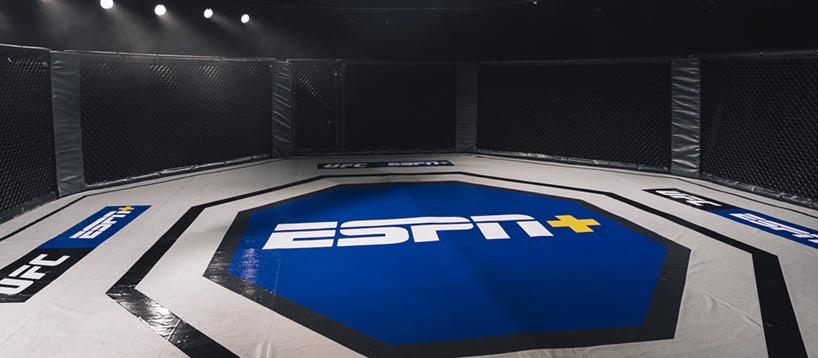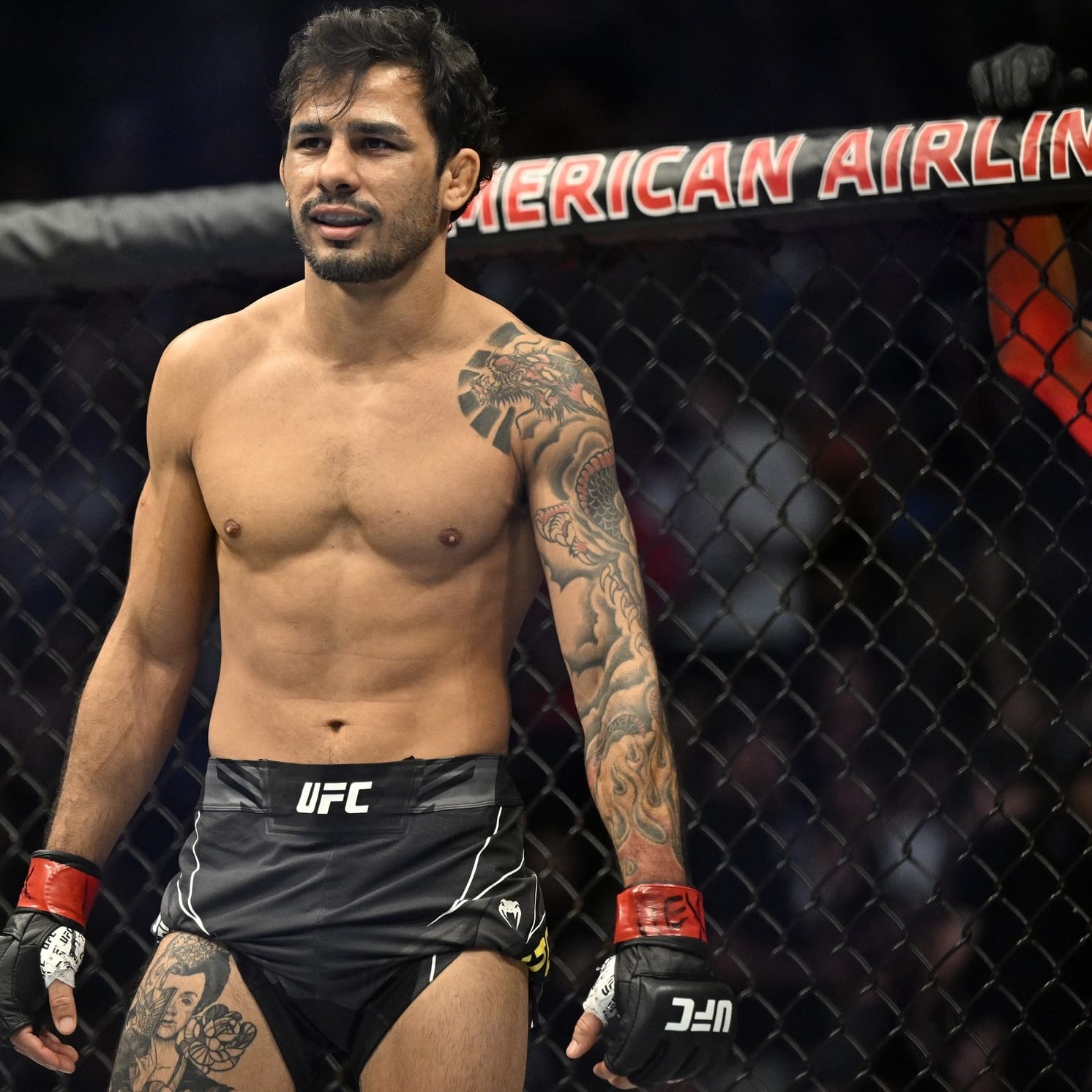The year isn't the only thing that's new as we say goodbye to another holiday season, with DraftKings rolling out a revamped scoring system for MMA. We will discuss these changes at-length in order to clarify things for new players, as well as determine how the DFS-playing community can build lineups in order to take advantage of the new system.
Before we begin, let's take a look at the scoring criteria in order to get a sense of what we need to focus on and highlight exactly what changed when the new system was implemented. New categories have been bolded for ease of viewing.
| Moves | |
|---|---|
| Strikes | +0.2 Pts |
| Significant Strikes | +0.2 Pts |
| Control Time | +0.03 Pts/Second |
| Takedown | +5 Pts |
| Reversal/Sweep | +5 Pts |
| Knockdown | +10 Pts |
| Fight Conclusion Bonuses | |
|---|---|
| 1st Round Win | +90 Pts |
| 2nd Round Win | +70 Pts |
| 3rd Round Win | +45 Pts |
| 4th Round Win | +40 Pts |
| 5th Round Win | +40 Pts |
| Decision Win | +30 Pts |
Quick Win Bonus (First round win in 60 seconds or less) | +25 Pts |
- Significant Strikes are any Distance Strike or Clinch/Ground Strikes that are considered "Power Strikes" by official scorers.
- A Significant Strike will count as both a strike and a significant strike and will be worth a total of 0.4 Pts
- Control Time is the time spent in the dominant position on the ground or in the clinch. +0.03 points are awarded per second.
- A Knockdown is awarded to a fighter who knocks his/her opponent down due to debilitation for what the official scorers consider an appreciable amount of time.
- A Quick Win Bonus is awarded to the winning fighter if they win in the first round in 60 seconds or less.
Note that Advances has also been removed from the list of scoring categories.
Significant Strikes VS. Regular Strikes
The first change to notice when looking at the criteria above is the addition of a new striking category called "strikes" (we will refer to this as "regular strikes" going forward). This may be a bit confusing at first glance, as both are awarded the same amount of points, but it's helpful to remember that each "significant strike" is also a "regular strike." Thus, it can be said that a significant strike is actually worth +0.4 points. This means "significant strikes" go from "+0.5" to "+0.4" in the new system. Once we understand the actual scoring, we move on to deciding how we can get the most points under this system.
The issue, as you can see from the notes above, is that much of what is considered a "significant strike," as opposed to a "regular strike," is left to the discretion of official scorers. This being the case, I find it good policy (although certainly not a hard-and-fast rule) to simply think of all strikes from distance as "significant strikes." This means that "regular strikes" generally get thrown in two areas: standing in the clinch or while on the ground.
When simplified in this way, one can really start to get a sense of how to utilize the category of "regular strikes," which is to say that they will mainly help clinch fighters and those who work on the ground. Ground strikes and clinch strikes can certainly be considered "significant," but the bar for this seems much higher than those strikes landed at distance.
Consider the fight between John Phillips and Jun Yong Park that took place in October at UFC Fight Island 6. Park dominated Phillips for the better part of 15 minutes, laying hands on him until the final bell. Despite this, however, only 10 (!) of Park's 260(!!) strikes were considered significant. Keep this example in mind as you build lineups going forward, as it is a pretty clear indication of how strikes from different positions are generally scored.
Control Time
The next new scoring metric to take a look at is "control time." This applies not only to wrestlers in top position but also those in favorable positions when it comes to standing in the clinch. It's important to note, as well, that this category is (essentially) being offered in place of "passes," which has been removed from the scoring criteria. This is the one time as an MMA fan where we are allowed to root for the lay-and-pray and wall-and-stall artists, as every minute they spend just sitting in a dominant position nets us a cool 1.8 points. Remember that all strikes that connect during this period now register in the scoring, which means points may begin to pile up quickly for these fighters.
Consider Sarah Moras, who fights this Saturday at UFC Fight Island 7. She has yet to land more than 44 significant strikes in her eight fights with the organization, but her win over Liana Jojua in September of 2019 included 130 "regular strikes" and more than six and a half minutes of control time! That's a near 38-point boost under the new scoring rubric. Unfortunately, her status as a large favorite removes her from being called a "value" play this weekend, but she can certainly be considered a "cash play" option as a result of these changes.
Quick-Win Bonus
The last change in scoring may prove to be the least relevant in terms of what should garner attention from players. The "Quick-Win Bonus" awards any fighter who finishes an opponent in the first minute of the bout a score of 25 points. It's not that the extra points wouldn't be useful, it's just a question of whether this happens often enough to be considered something to target. Consider that most fights have (at least) a 15-to-30 second "feeling out" process, which is to say nothing of the fact that, as you go down in weight, finishes become less common. Still, we do have examples to examine, as UFC Vegas 2 in June saw a remarkable three fights finish inside the 60-second mark. We don't expect this to happen again any time soon, but we can look at the conditions that may have made these quick finishes possible.
First, we can note that two of the three fights included debuting fighters. Debuting fighters may provide fertile ground for this bonus, as they are likely to be less skilled, and perhaps more willing to wade into dangerous situations in order to put on a show. The next thing to realize is that this event took place in the smaller cage at the UFC Apex. Data has suggested that a smaller cage may lead to more finishes in general. Beyond this, the usual guidelines for finishes apply, such as targeting heavyweights and heavy-handed fighters against those with suspect chins. Taken in total, though, I would argue this doesn't happen often enough to explicitly target. Take advantage of the conditions when they present themselves, but don't chase this bonus at the expense of other categories.
There is no guarantee that you will win the next Millymaker, but these tips should provide a roadmap to building successful MMA DFS lineups as we go forward with this new system. By understanding what, fundamentally, leads to scoring points, players should get a good idea of the kinds of fighters they should include on their rosters.









































